Star Wars Kid: the rise of the digital shadows
Dans l’ombre du Star Wars Kid
Mathieu Fournier
2022
| 80 min
Documentary
Original version in French
Awards and Festivals
In this Mathieu Fournier documentary on the first viral phenomenon of the digital age, Ghyslain Raza (the “Star Wars Kid”) breaks his silence and reflects on his story for the first time. In doing so, he also explores our collective experience living in an online world in which we have to make peace with our digital shadows.
Poster
Long Synopsis
Ghyslain Raza was 15 years old in 2003, when his two minutes of fame would make him “patient zero” of web virality. He’d filmed himself letting it all hang out in a fixed-shot video. An amateur video. Overnight, it was made public by other students and downloaded millions of times — long before social media came onto the scene.
Suddenly, “sharing” became synonymous with meanness, intimidation, and a mob mentality. Unwittingly, Raza became the “Star Wars Kid.” Now, South Park and Family Guy were making references to the teen from Trois-Rivières behind the most famous meme in history.
Over the next two decades, Ghyslain built — or, rather, rebuilt — his life away from the camera. Today, he is a man with a keen emotional intelligence, and a doctoral student in law. The world has changed since 2003, largely thanks to the rise of social media, the commercialization of personal data, and the relentless memory of the web, which could come back to haunt us at any time. It’s a potent fear, and one that leads to questions on the right to control one’s own image, and, above all, the right to be forgotten.
Directed by Mathieu Fournier and shot in Trois-Rivières, New York and Portland this intimate documentary tells the story of the first viral phenomenon of the digital age. In the film, Ghyslain Raza breaks his silence, reflecting publicly for the first time on his story in conversation with other participants. Through his story, we explore our own shared experience, living in an online world hungry for content and ruled by the famous sentiment expressed in the John Ford film The Man Who Shot Liberty Valance: “When the legend becomes fact, print the legend.” It’s a line which begs the response, “Yes, but at what price?”
One-Liner
Ghyslain Raza, better known as the “Star Wars Kid,” breaks his silence to reflect on our hunger for content and the right to be forgotten in the digital age.
Five-Question Interview / Director & Participant
Virality implies contagion and mutation. Mathieu, you avoided falling into the trap of contributing to the phenomenon you are covering. How did you approach Ghyslain with the project? And Ghyslain, why did you agree to participate?
Mathieu Fournier: Journalist Jonathan Trudel [who wrote about the affair for the magazine L’actualité], Ghyslain and I had talked about it for a number of years. We knew right from the start that we didn’t just want to tell Ghyslain’s story. The idea was to create something that would be useful, that would grapple with current issues, and that would show why this story is still relevant today. We also wanted Ghyslain to be a part of the project.
Ghislain Raza: I had confidence in Jonathan and Mathieu, and their approach was suitable for the subject. We were on the same wavelength. The most important thing was to not turn it into a melodramatic story. It needed to have an element of reflection and raising awareness.
Have we moved from an era of in which jocks were the bullies to one where it’s the geeks? In other words, have we passed from a more “classic” period of brute force and a focus on how people look, to one of secrecy, sneakiness, and, more generally, suspicion?
GR: I’m not convinced. Old-fashioned schoolyard intimidation has not disappeared. But there have been new dynamics added to it. They are fed by human nature combined with social media. We have a hunger for these sorts of things. It’s a bit like this new moral absolutism, in which 140 characters can come back and haunt you at any time.
I often think about a quote from the John Ford film The Man Who Shot Liberty Valance: “When the fact becomes legend, print the legend.” Our brains love archetypes and causal links. This in part explains the fascination with conspiracy theories. It gives you maximum dopamine with minimum effort. The thoughts we express have to be short, and encourage anger and outrage. The algorithms feed that. It’s a business model. And afterwards, we think, “Who could have predicted it would turn out so badly?”.
MF: That’s why Andy Baio [an American tech blogger largely responsible for disseminating the “Star Wars Kid” video] was more important than the young Trois Rivières kids who put the video online in the first place. In the case of the three teens, it was garden-variety classic jock harassment. But, on the other hand, Andy Baio represents what we have all become: consumers of web culture who share without thinking.
That’s the main difference. It’s not intimidation coming from bad intentions. It goes along with the way the web was built. That’s what Andy represents in the new roadmap of our interactions. In some way, he is also “patient zero” of what intimidation has become.
One of the striking things about this film is the subject’s emotional intelligence. Faced with participants like Andy Baio, Ghyslain seems to have the upper hand. Is that the reaction you were expecting?
MF: Andy was the second most important person in the documentary. I absolutely wanted him to be a part of this project. The first thing he asked was, “Is Ghyslain participating?” Baio had always refused to tell his side of the story. His question spoke to his openness, and also to his sensitivity with regard to the events.
At that point, we couldn’t have foreseen just how nervous he would be. When we told him we would come meet him in Portland, he didn’t try to get out of it. The night before our interview, Ghyslain asked me, “What are we looking for tomorrow?” I told him, “Don’t worry. Andy is probably a hundred times more nervous than you right now.”
Kate Eichhorn, author of The End of Forgetting: Growing Up with Social Media, discusses the way we see child labour as a relic of the past, but argues that it’s come back through social media and content creation. What do you think?
GR: Kate’s example is striking. I don’t find the analogy far-fetched. If we think about what the large social media companies and data brokers do to monetize young people’s data, there is a real parallel with the exploitation of children — especially if we take into account the long-term consequences that data could have, considering that it’s collected during a time when children are developing and vulnerable.
MF: For a long time, the working title of this documentary was Star Wars Kid(s), to get across the idea that it resonates with what young people today are dealing with. Kate offers some very in-depth reflections on our relationship with forgetting and with social media. Nobody will again live through what Ghyslain lived through at the time. But everyone is in a position where they could lose control of their image, and the risks and dangers have multiplied. I thought it was interesting to explore with Kate the trap of having to remember everything, at all cost. I believe we should give people the opportunity to reinvent themselves, to drop out of sight, to become forgotten.
Is the right to be forgotten a viable concept?
GR: The right to be forgotten is a concept that’s both valuable and important. Each technological revolution requires a new toolkit, and this latest one is no exception to the rule. The right to be forgotten should be a part of our toolkit. But, as they say, the devil is in the details.
I know the European Union is experimenting with new mechanisms to see how the concept can be enshrined in law. That seems to be a way of normalizing it. I believe we should be progressive in our approach to new technologies. Technology can help us. We need to find humanist solutions that respect people’s dignity.
Documentary films are making increasing use of drones, bringing with them an overview effect and the idea and image of a “human anthill.” Tell us about the use of this technology in your documentary.
MF: The drone was part of the project right from the start. The drone shot is a pretty classic shot, but we only used it in Trois-Rivières [and not in New York or Portland]. In its own way, the town becomes a character in the film. That’s where the roots of the story lie. This allows us to understand and think of the town itself as lying at the heart of what Ghyslain lived through. The drone allows us to talk about where he’s from, without our having to go back to his home or interview his parents.
Listening to Ghyslain, I also had the impression that, at the time, media were hunting him down. The drone suggests this sense of surveillance. Furthermore, seeing roads and cars through these overhead shots is reminiscent of looking at a matrix. The image evokes something digital.
When you started out, where you expecting to speak to the individuals who originally shared the video?
MF: Ghyslain and I talked about it. But, honestly, it was never part of the game-plan. We tried to find two of the three people involved. We wrote to them to explain we had no intention of exposing them, that we wouldn’t name them, and that if they wanted to talk about the project with us, the door was open. We never heard anything back. It’s also possible the messages never reached them.
GR: We talk about the right to be forgotten. A youthful mistake should not haunt someone for the rest of their life. Just because I didn’t get to benefit from that treatment doesn’t mean these individuals in turn shouldn’t. Today, we see people whose careers are destroyed over three words they said 15 years ago. That’s not what we want to have happen.
What do you hope comes out of this project?
MF: At one point, I asked myself the question: “Should we be making a journalistic portrait with concrete answers to the questions and issues we are raising?” The film was largely written while we were shooting. Documentaries often have to find their way during the shoot.
Ghyslain’s openness, and his ability to develop ties with so many different people, revealed to me the importance of personal encounters. That became the most important aspect to put forward. The human connection, the encounters with others, became much more critical than trying to teach some kind of lesson. The same goes for the decision to not show the perpetrators.
This documentary revolves around a man who rebuilt his life, took control of his story, and wants to help others. That’s where it becomes a shining light, and gets us away from a conversation about pity.
GR: I think it’s also a documentary with a lot of heart. And that’s all thanks to Mathieu. I’m reminded of this sentence Andy Baio said: “It’s more than a frustration, it’s the kind of thing that endangers democracy.” There’s tragedy on a personal and on a national scale.
The recent examples of the US, Myanmar and elsewhere are revealing, where you are dealing with acts that are literally genocidal. We have a duty and an international responsibility when faced with these problems in our homes, right in front of us.
Excerpts
Excerpt 1: Amanda Brennan
Excerpt 2: International Press
For broadcast quality excerpts, please contact the NFB Publicist: Myriam Valcin.
Images
Loading...
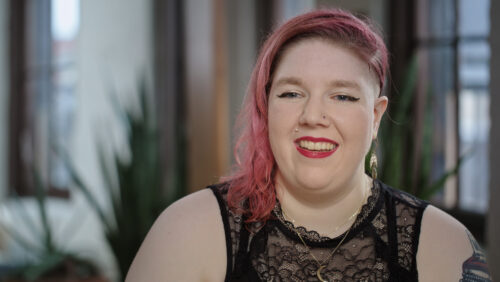
Download
Loading...
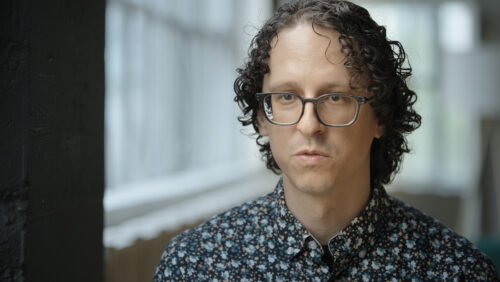
Download
Loading...

Download
Loading...
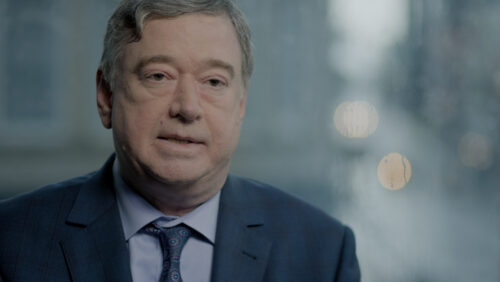
Download
Loading...

Download
Loading...
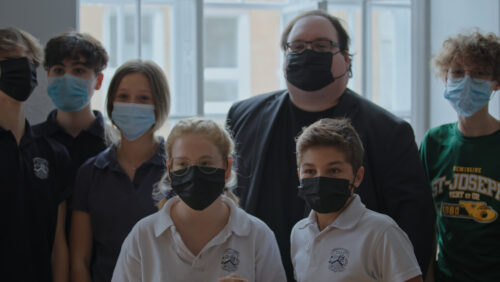
Download
Loading...
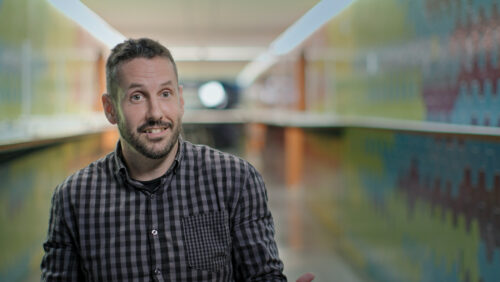
Download
Loading...
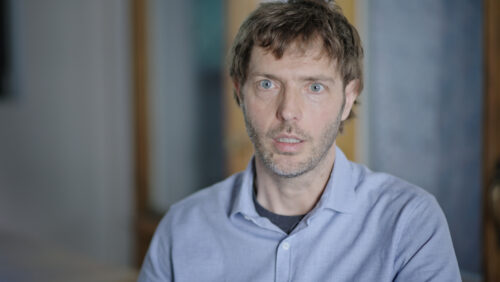
Download
Loading...

Download
Loading...
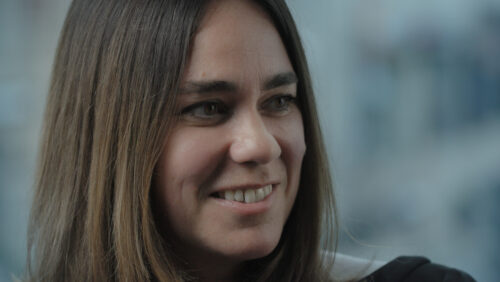
Download
Loading...
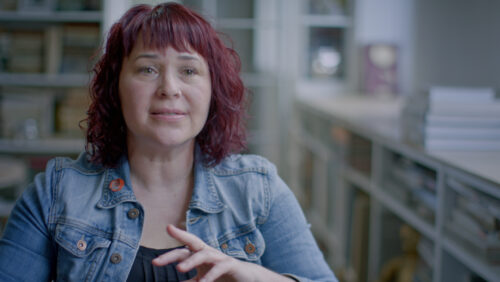
Download
For high resolution images, please contact the NFB publicist: Myriam Valcin.
Credits
A film by
MATHIEU FOURNIER
Written by
MATHIEU FOURNIER AND JONATHAN TRUDEL
Produced by
ANNIE BOURDEAU (URBANIA)
PIERRE-MATHIEU FORTIN (NFB)
Editing
CARMEN MÉLANIE PÉPIN
Direction of Photography
MAXIME PILON-LALANDE
Location Sound
SYLVAIN VARY
Based on the story of
GHYSLAIN RAZA
With the participation of
GHYSLAIN RAZA
and
ANDY BAIO
JEAN-MICHEL BERTHIAUME
CHRISTIAN BOUCHARD
AMANDA BRENNAN
NINA DUQUE
KATE EICHHORN
KATHARINA NIEMEYER
KATHLEEN ROUILLARD
JONATHAN TRUDEL
FRANÇOIS VIGEANT
And the students of
the Séminaire Saint-Joseph
ALYS ANGERS
CHARLYN BERGERON
MEAGAN BOISCLAIR
OLIVIER GÉLINAS
ELIE GRÉGOIRE
ÉDOUARD LABBÉ
FLORENCE LAMOTHE
JAYDEN ROY
Director
MATHIEU FOURNIER
Writers
MATHIEU FOURNIER
JONATHAN TRUDEL
Research
MATHIEU FOURNIER
JEAN-MICHEL BERTHIAUME
JONATHAN TRUDEL
Assistant Director
MAUDE-ÉMILIE ST-PIERRE
Content Consultant
GHYSLAIN RAZA
Director of Photography
MAXIME PILON-LALANDE
Cameramen
ALEXANDRE FRÉCHETTE
MARC WARDEN
Camera Assistant
CHARLES HARDY
Additional Images
LA BOÎTE RONDE
Location Sound
SYLVAIN VARY
STÉFANE KIROUAC
Editor
CARMEN MÉLANIE PÉPIN
Technical Support – Editing (NFB)
PIERRE DUPONT
MARIE-JOSÉE GOURDE
PATRICK TRAHAN
Research – Archives
KARINE PERRON
Projections Consultant
AMELIA SCOTT
Translation and Subtitling
TRANS & SUB COOP
Art Directors
MARC-ANTOINE JACQUES
MATHIEU LALUMIÈRE
Animation Designer
MATHIEU LALUMIÈRE
Additional Graphic Design (NFB)
MÉLANIE BOUCHARD
Online Editing and Colourization (NFB)
YANNICK CARRIER
Sound Design
SYLVAIN BELLEMARE
LUC RAYMOND
STAN SAKELL
Re-recording (NFB)
ISABELLE LUSSIER
Music
“Prophets”
COMPOSED BY SIMON LEOZA
ALL RIGHTS RESERVED: KAY PRODUCTIONS MUSIQUE
“La nuée”
COMPOSED BY SIMON LEOZA
ALL RIGHTS RESERVED: KAY PRODUCTIONS MUSIQUE
“Slumber”
COMPOSED BY SIMON LEOZA
ALL RIGHTS RESERVED: KAY PRODUCTIONS MUSIQUE
“Omen”
COMPOSED BY SIMON LEOZA
ALL RIGHTS RESERVED: KAY PRODUCTIONS MUSIQUE
“Naissance”
PERFORMED BY CRI
COURTESY OF COURAGE HOLDINGS INC.
AND INVOLVED PUBLISHING
“End of Road Kill”
PERFORMED BY ORGAN MOOD
COMPOSED BY CHRISTOPHE LAMARCHE LEDOUX, ESTELLE FRENETTE-VALLIÈRES, MATHIEU CHARBONNEAU AND MATHIEU JACQUES
WITH THE KIND COLLABORATION OF BRAVO MUSIQUE INC.
“Indivisible”
PERFORMED BY ORGAN MOOD
COMPOSED BY CHRISTOPHE LAMARCHE LEDOUX, ESTELLE FRENETTE-VALLIÈRES, MATHIEU CHARBONNEAU AND MATHIEU JACQUES
WITH THE KIND COLLABORATION OF BRAVO MUSIQUE INC.
“Fleuve No. 1”
PERFORMED BY FLORE LAURENTIENNE
COMPOSED BY MATHIEU DAVID GAGNON
COURTESY OF COSTUME RECORDS
“Route”
PERFORMED BY FLORE LAURENTIENNE
COMPOSED BY MATHIEU DAVID GAGNON
COURTESY OF COSTUME RECORDS
URBANIA Team
Production Coordinators
ALEXANDRE BOUCHARD
DOMINIQUE FECTEAU
NOÉMIE RIOUX
Post-production Director
ÉLINE SANSCHAGRIN
Editing Assistants
MÉLANIE BÉNARD
ANNE-SOPHIE BORDUAS
ALEX TRÉPANIER
Technical Manager
HAROLD LOPEZ GARROZ
Technical Assistant
FRANCIS ROBERT
Finance Director
CAROLINE CÔTÉ
Production Accountant
SAMANTHA SERVANT
NFB Team
Line Producer
MÉLANIE LASNIER
Senior Production Coordinator
JOËLLE LAPOINTE
Production Coordinators
CHINDA PHOMMARINH
ALEXANDRA BOURQUE
Technical Coordinators
DANIEL CLAVEAU
MIRA MAILHOT
Studio Coordinators
GABRIELLE DUPONT
STÉPHANIE LAZURE
Administrator
SIA KOUKOULAS
Legal Advisor
PETER KALLIANIOTIS
Marketing Manager
KARINE SÉVIGNY
Marketing Coordinator
ERIC BONDO
Special thanks to
CLIFF CAPORALE, STÉPHANE GIRARD, PIERRE TRUDEL, MARC JOLY CORCORAN, BORÉALIS, TROIS-RIVIÈRES COURTHOUSE, CITY OF TROIS-RIVIÈRES, JOHN ABBOTT COLLEGE, MYRIAM BERTHELET, ADÈLE B. FOURNIER, CHARLES GAGNON-PRADIER, HUGUES SWEENEY, LOUIS-RICHARD TREMBLAY AND VALÉRIE DARVEAU, MIRYAM BOUCHARD, ALICE FORTIN, LA GUÉRILLA.
THE PRODUCTION TEAM WOULD ALSO LIKE TO THANK THE PRINCIPAL AND STUDENTS OF THE SÉMINAIRE SAINT-JOSEPH DE TROIS-RIVIÈRES FOR THEIR INVALUABLE CONTRIBUTION.
Archives
Bryan Dube
CBS News
CBS Studios
Fuzzy Door Productions
Getty Images
Groupe TVA inc.
Imagine Television
Le Nouvelliste
Media QMI inc.
NBC News via Getty Images
Neversoft Entertainment Inc.
POND 5
Radio-Canada
South Park Studios
Spartina Productions
The Hurwitz Company
Underdog Productions
YouTube
20th Century Fox Television
2006 Volcano Entertainment III, LLC
Produced by URBANIA In co-production with The National Film Board of Canada
Executive Producers
Nathalie Cloutier (NFB)
Raphaëlle Huysmans (URBANIA)
Philippe Lamarre (URBANIA)
© 2022 URBANIA TV 3105 inc. and The National Film Board of Canada
Team
Mathieu Fournier
Writer and Director
Photo
Photo : Myriam Berthelet
Annie Bourdeau
Producer / Vice President, Original Productions (URBANIA)
Photo
Pierre-Mathieu Fortin
Producer (NFB)
Photo
Photo : ©2021 Valérie Sangin
Ghyslain Raza
Protagonist and Content Consultant
Photo
Media Relations
-
About the NFB
For more than 80 years, the National Film Board of Canada (NFB) has produced, distributed and preserved those stories, which now form a vast audiovisual collection—an important part of our cultural heritage that represents all Canadians.
To tell these stories, the NFB works with filmmakers of all ages and backgrounds, from across the country. It harnesses their creativity to produce relevant and groundbreaking content for curious, engaged and diverse audiences. The NFB also collaborates with industry experts to foster innovation in every aspect of storytelling, from formats to distribution models.
Every year, another 50 or so powerful new animated and documentary films are added to the NFB’s extensive collection of more than 14,000 titles, half of which are available to watch for free on nfb.ca.
Through its mandate, its stature and its productions, the NFB contributes to Canada’s cultural identity and is helping to build the Canada of tomorrow.